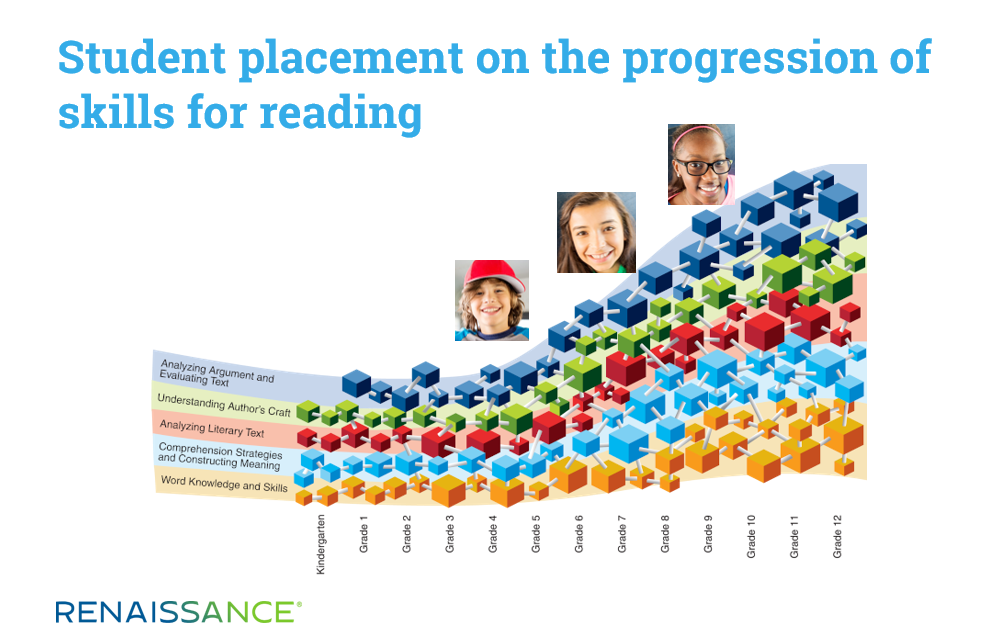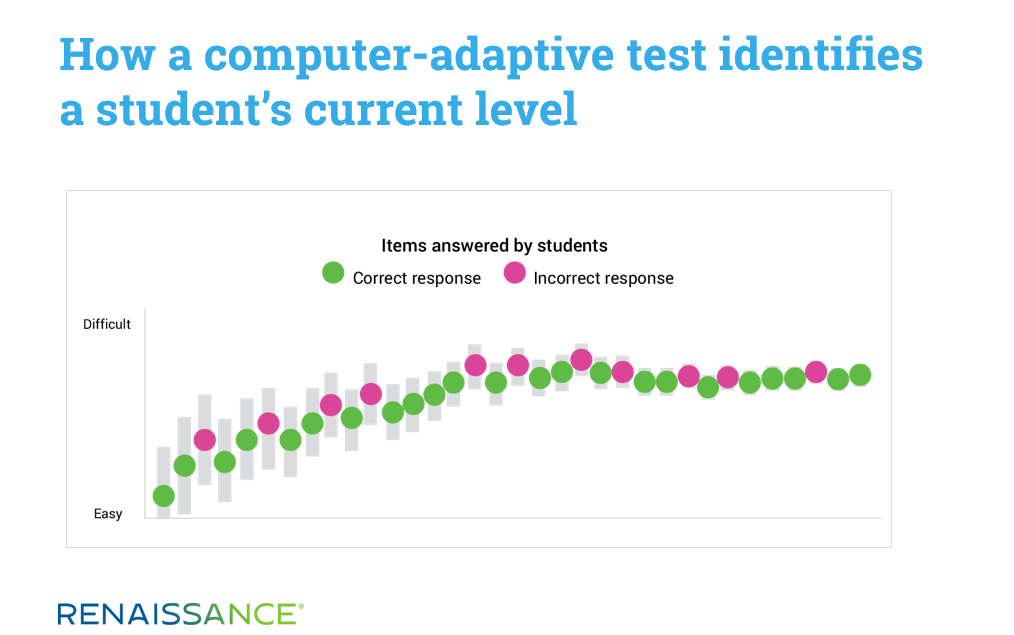July 30, 2020
In our previous blog, we discussed key considerations for educators around the remote administration of Star Assessments. This includes issues like scheduling, maintaining test security, and accurately interpreting the results. In this blog, we’ll look at additional remote testing considerations—but this time from students’ and parents’ points of view.
Students certainly had varying reactions to last spring’s sudden school closures. Some students celebrated, thinking that summer vacation had arrived early. Others were disappointed and anxious, given the loss of familiar routines and fears about the pandemic’s effect on their families and friends. Students had a lot of questions about how things would change, how “school” would work in the coming weeks, and when they’d see their teachers and classmates again.
As schools adopted various forms of distance learning, students who’d attended traditional “brick-and-mortar” schools likely felt that their familiar world had been turned upside down. They had to quickly adapt to the new routine of learning from home—assuming, of course, that they had access to the technology that’s needed to participate in online learning. Even if they could participate, they may have felt isolated or unengaged at times, given that they could no longer raise their hand or walk up to their teacher’s desk for assistance.
As we gear up for the new school year, many districts will once again rely on distance learning, whether full or part time. As always, educators will have two critical tasks at the start of the year. First, to build personal connections with students, which can be challenging—but certainly isn’t impossible—in a remote environment. Second, to determine where students are in their learning, so they can strike the right balance between the introduction of new content and the review of important prerequisite skills from the prior year.
Many schools administer Star Assessments early in the fall to identify students’ current level and pinpoint their instructional needs. Because Star can be administered remotely, schools can follow a similar process this year. To make sure that students and parents understand the purpose of the Star test, as well as the differences involved in taking the test remotely, we suggest clearly communicating the answers to the four questions below.
Q: Why are students taking the Star test?
Star provides teachers and principals with data they need to make important decisions about student learning. Whether instruction is provided face-to-face, remotely, or in a combination of the two, data from Star helps educators to:
- See what students have already learned—and what they’re ready to learn next
- Gauge the effectiveness of instruction, so they can make adjustments when necessary
- Identify students who are struggling and may need extra support
- Compare students’ performance to that of their grade-level peers across the US
- Set goals for student growth, and track progress toward these goals
- See how students are performing against grade-level standards
- See how students are likely to perform on the state summative test
Educators can review the results of a Star test as soon as the student finishes testing. While Star scores have multiple uses, many educators find it particularly helpful to review Star’s instructional planning information in detail, so they can see which skills students are ready to learn next.
How does Star identify these skills?
Regardless of whether students are performing at, above, or below grade level, Star pinpoints their current location on the progression of skills in either reading or math, according to your state standards:

Because skills are placed in a teachable order from Kindergarten through grade 12, Star is able to “look ahead” in the progression and identify the next best skills to teach in order to keep each student moving forward. This information will be especially useful in fall 2020, as educators seek to strike the right balance between the introduction of new content and review of key prerequisite skills taught in prior years.
Q: What’s it like to take the Star test?
Star is different from the traditional end-of-unit tests or short “pop” quizzes that students are most familiar with.
First of all, the Star test is a general measure of what students know and can do. It’s not an assessment of, say, how much they remember from the textbook chapter they read last week. Star is also a computer-adaptive test, meaning that the student’s response to a question determines the question the student sees next. When students answer a question correctly, the next question will be slightly more difficult. When they answer a question incorrectly, the next question will be slightly less difficult. The test continues this way, moving up and down the scale until it finds the student’s current level with a high degree of certainty:

As this image shows, a major benefit of computer-adaptive tests is their ability to provide accurate information without requiring a large number of questions. While non-adaptive tests might need to ask five to seven questions about every skill in order to determine whether students know it, adaptive tests are able to draw reliable conclusions about skill mastery while the student is still in the process of testing. To give just one example: If a student can solve 32 x 74 on the Star Math test, there’s no reason to ask the student to also solve 3 x 4. The test assumes that if students can multiply two-digit integers, they have mastered the earlier skill of multiplying single-digit integers.
Once students understand the nature and purpose of the Star test, it’s important to review the testing guidelines. Students cannot use outside resources like calculators or dictionaries when testing, although they can use a pen or pencil and scratch paper for Star Math. Prior to testing, the test administrator should review these and other instructions, so students know what is allowed and what isn’t. Administrators are provided with a script to follow, to help ensure that every student receives the same information.
When students take a Star test in the school building, they’re typically in the same room as the test administrator. For a remote administration, the teacher may instead provide testing instructions using an online video conferencing tool, as modeled in this example. In other cases, schools may decide to involve a parent or another adult in the household to serve as the test administrator.
Q: How can students do well on the Star test?
Regardless of where students test, the answer to this question is the same: Put in your best effort to show what you know and can do.
It’s important to remember that the purpose of Star is measurement. Students’ goal isn’t to answer every question correctly but rather to do their best. As noted earlier, no matter the student’s final score, their teachers will use the Star data to plan daily instruction.
If testing tends to make students anxious, or if they have questions about how to prepare for a Star test, you might share the following tips:
- Students will likely receive questions about things they don’t know, covering skills they haven’t been taught yet. This is normal and there’s no cause for panic. They should simply choose the answer that seems most likely and move on to the next question, because the test will automatically adapt to their level.
- Students can’t study for a computer-adaptive test, just as they can’t “will” themselves to grow taller the night before having their height measured. The best thing they can do to improve their performance is to put effort into learning new things and practicing the reading and math skills they’ve been taught.
- There’s a time limit for each question on the Star test, but not for the test as a whole. It takes most students about 20 minutes to finish. The reason for the time limit is not to make students nervous but to keep the test moving, so students do not spend large chunks of time trying to figure something out that’s too complex for them.
Q: What do parents need to know about Star?
The primary message to parents and other caregivers is to focus on the student’s effort.
When students are taking a Star test at home, parents may feel tempted to provide a few hints or—in the case of younger children—to read the questions and answer choices aloud. This is understandable. It can be difficult to watch a child struggle or to select an incorrect answer. In the case of a Star test, however, parents can best help their children by not helping them at all. In order to provide the instruction and support that students need for success—both now and in the future—teachers must have a clear understanding of what students can do on their own, not what they can do with a parent’s help.
Parents might also be inclined to give children a reward for a high score on a Star test, or consequences for a low score. Unless there’s an indication that the student rushed through the test or didn’t take it seriously, this is probably misplaced. A better solution is to praise the child’s effort, using a statement like “I could see you were really thinking through all of those questions” or “You really worked hard to answer as many questions as you could.”
If you can connect the test to the student’s work completing assignments, practicing reading and math skills, and asking for help while they’re learning, so much the better.
Adjusting to the new normal
Whether Back-to-School 2020 involves in-person, remote, or blended learning, understanding students’ instructional needs will be critical. After giving students time to acclimate to the new school year, administering Star—whether in the school building or remotely—will provide key information to guide daily instruction and practice. By communicating the test’s purpose and the testing procedures to students and their parents, you can help to calm anxiety or uncertainty around testing—and help to ensure you receive the accurate, actionable information you need to move learning forward.
Learn more
Looking for more best practices for remote administration of Star Assessments? Watch our new webinar for tips on scheduling, test security, testing accommodations, and more.

